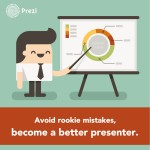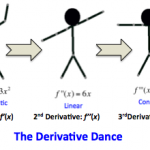Getting your motor running: how to start a presentation
Giving momentum. That’s what you are doing when you are start talking to your fellows (or professors …). You are igniting their minds and curiosity just like you ignite your car when you start driving.

“Get your motor runnin’ / head out on the highway / lookin’ for adventure / and whatever comes our way” (Born to be Wild by Steppenwolf)
Now, there are different gears in your car for different transmission levels. Accordingly, you also have different gears to feed the attention of your audience. While it is recommended to start a car in the lowest gear if you want to keep it healthy and save gas, you are allowed—or even recommended—to give a huge boost to the start of your presentation.
If you start with a great push, it is more likely that your audience will constantly pay attention and won’t miss any details, hence they will understand each and every sentence you are saying, each and every fact you are presenting.
Keeping the momentum
A listenerer that looses attention for a second often has to put some effort into getting back to the topic. Translating this concept into our analogy, you need your car to run smoothly (that is what the cruise control is invented for) so that you use a minimum amount of efforts to keep the momentum. If you don’t start your presentation in a way that creates interest and expectation, there will be those in your audience who has already lost their attention at the beginning, and they will never be back!
Should we start talking as loud as possible and make profoundly intense gestures then? No, what I mean is rather this: you have to inject a huge dose of curiosity into your audience!
You might have a topic which is already interesting; then you have an easy job. But even when your topic isn’t the most interesting topic or hasn’t got the wittiest title, you can still save the day.
Looking at the two extreme sides (fascinating vs. boring) let’s look at two (and a half) example for such a practice!
Example 1: starting with an amazing fact
The claim that ”Every atom in your body came from a star that exploded [—] we are made of stardust!” (taken from one of my favourite Symphony of Science videos) will hook any listener. This is how you should start when you have an astounding fact to present. A sentence like this might have more momentum to pass on than any human presenter, so why wouldn’t you employ this momentum?
Example 2: creating expectation
Explaining, say, ”the statistical correlation between the amount of daylight and how much grass a dairy cow consumes” can be a greater challenge. But don’t worry! Instead, just think about that, as a child, why you were so excited before Christmas? Because you knew that gifts are awaiting you, but you had no idea what they will be!
Being mysterious in the very beginning can make you really interesting, even when your topic is not. Note that being mysterious is not the same as giving false or void information! You have to show a little but not everything, in order to keep the attention. Your audience has to feel that more is awaiting for them.
A good way to do this is to start with an analogy to your main message. The audience will know that something with a clear structure/message is awaiting them (as you knew about the presents at Christmas), but they don’t know what exactly it will be; this should make them eager to listen and get all the information. An example for a witty start I heard from a fellow student of mine:
“Just like we build fences around our precious properties, our bodies build walls around our brains to defend it …”
What do you think the presentation was about? The blood-brain-barrier of course! A nice and simple analogy in my opinion.
Next time I will discuss analogies. They are great tools … and also great traps. Stay tuned!
- Analogies—when two similar worlds meet - May 11, 2014
- Getting your motor running: how to start a presentation - March 13, 2014






You’ve got my interest Majubu. Keep it up (see what I just did there?)
You won’t be disappointed Doris!